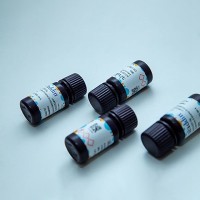Neuronal Growth-Promoting and Inhibitory Cues in Neuroprotection and Neuroregeneration
互联网
678
During development of the nervous system, neurons extend axons over considerable distances in a highly stereospecific fashion in order to innervate their targets in an appropriate manner. This involves the recognition, by the axonal growth cone, of guidance cues that determine the pathway taken by the axons. These guidance cues can act to promote and/or repel growth cone advance. The directed growth of axons is partly governed by cell adhesion molecules (CAMs) on the neuronal growth cone that bind to CAMs on the surface of other axons or nonneuronal cells. In vitro assays have established the importance of the CAMs ((neural cell adhesion molecule NCAM), N-cadherin, and L1) in promoting axonal growth over cells. Compelling evidence implicates the fibroblast growth factor receptor tyrosine kinase as the primary signal transduction molecule in the CAM pathway. CAMs are important constituents of synapses, and they appear to play important and diverse roles in regulating synaptic plasticity associated with learning and memory. Synthetic NCAM peptide mimetics corresponding to the binding site of NCAM for the fibroblast growth factor receptor promote synaptogenesis, enhance presynaptic function, and facilitate memory consolidation. Dimeric versions of functional binding motifs of N-cadherin behave as N-cadherin agonists, promoting both neuritogenesis and neuronal cell survival. Negative extracellular signals that physically direct neurite growth have also been described. The latter include the myelin inhibitory proteins, Nogo, myelin-associated glycoprotein, and oligodendrocyte-myelin glycoprotein. Potentiation of outgrowth-promoting signals, together with antagonism of myelin proteins or their convergent receptor, NgR, and its second messenger pathways, may provide new opportunities in the rational design of treatments for acute brain injury and neurodegenerative disorders.









